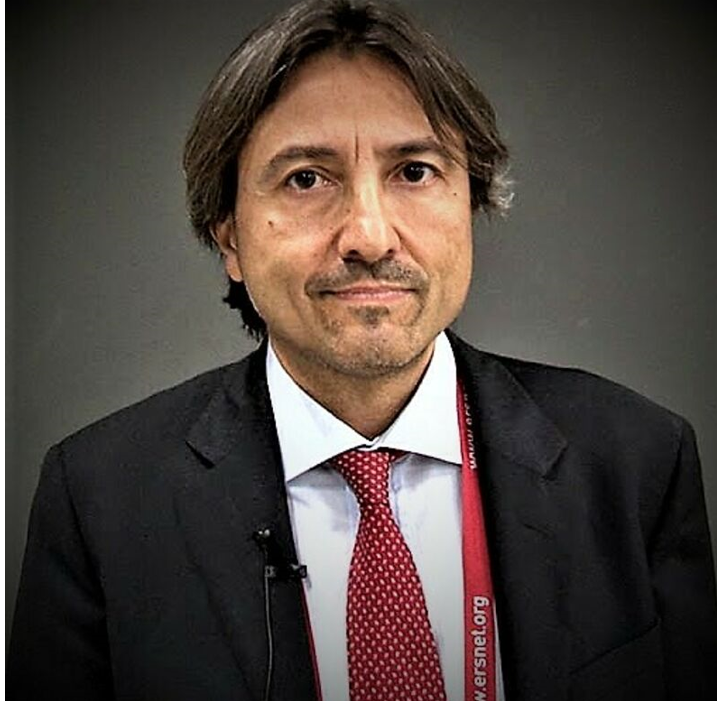An algorithm to reduce invasive ventilatory support and ICU admissions
In march 2021, we interviewed Raffaelle Scala (San Donato Hospital – Arezzo Italy) and João Carlos Winck, professor at the Faculdade de Medicina do Porto (FMUP) and chair of the “Noninvasive Ventilatory Support” group of the European Respiratory Society, regarding the algorithm they created to reduce the necessity of invasive ventilatory support and ICU admissions.
Revista da Ordem dos Médicos (ROM) – From your experience as medical doctors, do you think that in an overwhelmed hospital, professionals might struggle to decide what to do and what therapy is the best for each patient?
Raffaelle Scala (RS) – When there is a big influx of patients to the hospitals, with increased hospitalizations and admissions to the ICU, one can expect more difficult decisions and worse outcomes. For medical doctors, to make the right choice at the right time for each patient who is waiting for the best therapy may be sometimes challenging and therefore stressful. In the routine practice, the task of the doctor is to tailor what evidence-based knowledge recommends or suggests to the different clinical scenarios. This job is usually easy for straightforward situations (eg., inhaled therapy for stable asthma in compliant subject sitting in a quiet ambulatory), it becomes to be tough and insurmountable in very difficult to manage cases. This is the case of doctors who have to deal at the same time several patients admitted in an Hospital in a very sick conditions requiring to receive the right therapy in a very short time.
João Carlos Winck (JCW) – Pandemic COVID-19 outbreaks have caused and causes the access in Hospital of a tremendous, unexpected influx of severe Pneumonia patients with acute respiratory failure who need to receive noninvasive respiratory therapy – NIRT- (ie. High flow nasal cannula, CPAP, NIV) as early as possible to prevent the deterioration of respiratory conditions with intubation and ICU care. Lack of evidence-based recommendations, lack of technological and human resources (ie. ventilator, oxygen, monitors, health care staff), fear of viral contagious, difficulty in communications on the ground for the encumbrance of DPI make the work of first-line doctors like a “mission impossible” struggling against an unknown tsunami that may very quickly devastates the lung of thousands and thousands of infected people. When to start respiratory support? Which priority or algorithm do I have to follow in case of supply failure? How long I could push up the noninvasive support before considering intubation in an overwhelmed ICU? How could I communicate with relatives? How Could I manage the stress of myself and of my colleagues? These are only some questions that medical doctors may ask themselves!
ROM – COVID-19 related Acute Respiratory Failure may be successfully treated with Conventional Oxygen therapy, High Flow Nasal Cannula, Continuous Positive Airway Pressure or Bi-level Positive-Pressure ventilation. Many options with different applicability… Can you explain the gains in the use of the algorithm you developed as a helpful tool in this context?
JCW – The use of an algorithm can help clinicians to choose the best respiratory support according with the patient profile and severity, what is normally define as personalized therapies. Using a predefined algorithm will help clinicians to review their own experience in a more objective way leading to publications and change of practice.
ROM – What’s the main advantage to the health system? (may it be part of the strategy to help the health services to cope with all the assistencial pressure due to this pandemic, by maintaining intensive care beds free for critical patients?)
JCW – At the beginning of the pandemic we tried to create a national database to register in real-time the different non-invasive support therapies being applied in Portugal. This would have had an amazing impact in evaluating in real-time the outcomes and change strategies accordingly. Due to the huge bureaucracy and low scientific tradition in our National Health System (SNS), in Portugal, prospective studies are very hard to set-up and we saw that during pandemic times even worse. I believe that in Portugal we missed a huge opportunity to create a national network to evaluate and monitor the COVID-19 cases, and specifically addressing innovation in respiratory care. In general, in Portugal, we are very good at reacting to the events and not planning in advance to involve all the stakeholders to reach excellence.

ROM – Knowing that 20% of patients infected with SARS-CoV-2 are admitted in intensive or intermediate care units, does your algorithm aim to decrease ICU admissions?
RS – Using the non-invasive respiratory therapies that we put in our algorithm (and based on the accumulated data of all the most recent series worldwide) we obtain success rates that are around 55 to 60%, thus avoiding invasive mechanical ventilation and hospitalization in intensive care. On the other hand, these techniques can also be used to in the “weaning” of patients who are ventilated invasively, also reducing the length of hospital stay in intensive care.

ROM – May the application of this algorithm avoid the unnecessary use of invasive therapies that have more adverse side effects for patients?
JCW – Although we do not have figures in Portugal about the trends of invasive ventilation across the different waves, in France (Damien Contou, Critical Care 2021), in the second wave, there was a lower proportion of patients requiring invasive mechanical ventilation. The delay between ICU admission and tracheal intubation was longer during the second wave. ICU mortality (50% vs. 52%, p = 0.96) and duration of ICU stay did not differ between the two waves. In one hospital in Reus, Spain another report (Simona Iftimie, medRxiv 2020) refers that patients from the second wave more frequently presented renal and gastrointestinal symptoms, were more often treated with non-invasive mechanical ventilation and corticoids, and less often with invasive mechanical ventilation, conventional oxygen therapy and anticoagulants.
UK data from the ICNARC database (James C Doidge et al AmJ Respir Crit Care Med 2020) show also that the receipt of invasive ventilation and renal replacement therapy reduced, and adjusted 28-day in-hospital mortality reduced by 11.8%
So if our algorithm is followed thoroughly I would expect we could also see reduction of invasive ventilation and improved outcomes.
ROM – Accordingly to the best practices it’s important to normalize deviant practices in healthcare. Is your algorithm a way to achieve that normalization in clinical practice and assure all the patients receive the same treatment wherever they are?
RS – Algorithms and guidelines are precious tools to unify clinical practice based on the best evidence. However, implementation in the real world is slower than desired. So, audits into Hospital practices should be mandatory on a regular basis to confirm if innovation is really being applied where it is needed!
ROM – Is there any feedback from the hospitals that are already applying this algorithm?
JCW – In Portugal, at least in Cascais Hospital and in Viana do Castelo (Hospital de Santa Luzia – Unidade Local Saúde Alto Minho), our algorithm is being applied and according with the professionals working there, the outcomes are very good.
RS – However, the lack of comparison with non-algorithm based NIRT application data does not allow us to clearly demonstrate the effectiveness of this strategy according to evidence-based criteria. Further analysis of the collected data is required to support the usefulness of this algorithm applied in the clinical practice. For sure, from our experienced-based feedback, we can say that the choice of escalating and deescalating each NIRT according to well defined clinical and physiological response to each supportive tool is of help to standardize the staff behavior according to the bundle’s strategy in a challenging scenario. Having time and clear defined drivers are essential for avoiding confused and dyssynergic choices and undesired mistakes in such pandemic overwhelming time.
ROM – The definition and use of an algorithm may save lives?
RS – We are confident that it may be nearly demonstrated. By now, the choice of applying a NIRT has been made according to the doctor in charge impression under stressful situations and time constrains. So at risk of mistake…
If we just look back at the of the Pandemic, international societies provided official warning on the use of NIRT for the risk of unduly delaying intubation and increasing mortality of COVID 19 patients. It has also reported an high rate of mortality in intubated and invasively ventilated patients. Afterwards, large clinical studies clearly showed that NIRT applied especially in Respiratory intermediate units improve lung gas exchange and avoid the need of intubation in at least one third of cases.
JCW – This NIRT strategy has also reduced the pressure on ICU network keeping free more beds for sicker patients requiring mandatorily invasive ventilation and ECMO. As a matter of the fact, we believe that an algorithm based on effective supportive tools who is able to clearly drive the choices of medical doctors to apply step by step HFNC or CPAP or NIV is likely to avoid intubation and the death of COVID 19 patients.
Prospective studies using our algorithm may answer this important question. But is Portugal prepared to do so?
ROM – What were the key items that you learn from the first waves?
RS – That non-invasive support therapies are not aerosol-generating procedures but rather dispersing bio-aerosols. With the proper Personal Protective Equipment and, ideally, in a negative pressure environment, the risks for Health Care Workers are low. In fact, in a review of the recent published papers the average infection rate in health-care professionals working in Respiratory Intermediate Care Units was 5%, less than the 12% reported in New York City among the staff not necessarily working with non-invasive support therapies.
JCW – Another important point that we have learned is that early intubation is not warranted.
Interview by Paula Fortunato, diretora executiva da Revista da Ordem dos Médicos (ROM); portuguese version published in ROM 212 (march 2021)

